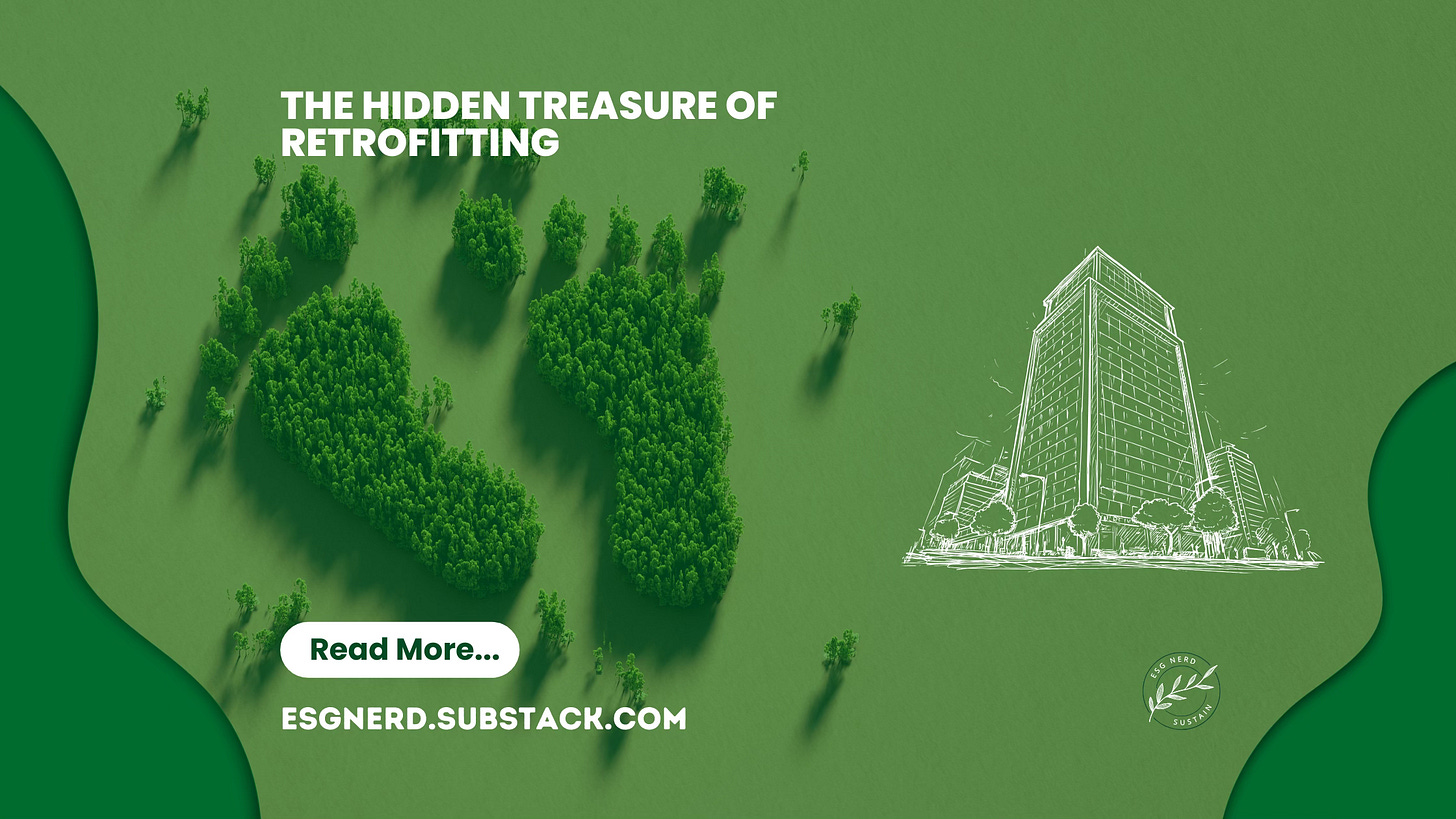The Hidden Treasure of Retrofitting: Saving Money and the Planet
Celebrating 70 posts on ESG NERD
As someone who spends their days working on refurbishment and retrofit projects in commercial office spaces, I've seen firsthand the incredible impact that upgrading existing buildings can have. It's a topic close to my heart, and today I want to share with you why retrofitting is such a valuable tool in our quest for sustainability and cost-efficiency.
Retrofitting is like giving a building a new lease on life. Instead of tearing down and starting from scratch, we breathe new energy into existing structures. This approach not only saves money but also significantly reduces our environmental impact. It's a win-win situation that often goes underappreciated.
Let's talk about a simple yet powerful example: lighting. Swapping out old fluorescent tube lights for modern LED alternatives might seem like a small change, but the effects are dramatic. LEDs use far less energy, last much longer, and provide better quality light. This single upgrade can slash electricity bills and reduce a building's carbon footprint. Plus, employees often report feeling more comfortable and productive under LED lighting.
But retrofitting goes beyond just changing light bulbs. It can involve upgrading Heatinvg Ventilation and Air Conditioning systems, improving insulation, installing smart building management systems, and much more. Each of these improvements chips away at energy consumption and operational costs while boosting the comfort and functionality of the space.
What's particularly exciting is how retrofitting aligns with broader industry goals. The Green Building Council, for instance, is on a mission to reduce carbon in construction. Retrofitting existing buildings is a crucial part of this effort. By focusing on upgrades rather than new builds, we're avoiding the massive carbon emissions associated with new construction materials and processes.
There's also a hidden benefit to retrofitting that often goes unnoticed: it helps preserve the character and history of our urban landscapes. Many older buildings have unique architectural features that would be lost if we simply demolished and rebuilt. Through careful retrofitting, we can maintain these cultural touchstones while bringing the buildings up to modern standards of efficiency and comfort.
Of course, retrofitting isn't without its challenges. It requires careful planning, expertise, and sometimes creative problem-solving to work within the constraints of existing structures. But that's part of what makes it so rewarding. Each project is a puzzle to be solved, an opportunity to blend the old with the new in innovative ways.
As we face the pressing need to reduce our environmental impact, retrofitting emerges as a powerful tool in our arsenal. It allows us to make significant strides in sustainability without the enormous resource expenditure of new construction. And the best part? It often pays for itself through reduced operating costs over time.
So next time you're in an office building, take a moment to look around. Consider the potential hidden within those walls, ceilings, and systems. With the right upgrades, that building could be not just a workplace, but a shining example of sustainable design. That's the power of retrofitting – turning the ordinary into the extraordinary, one building at a time.



